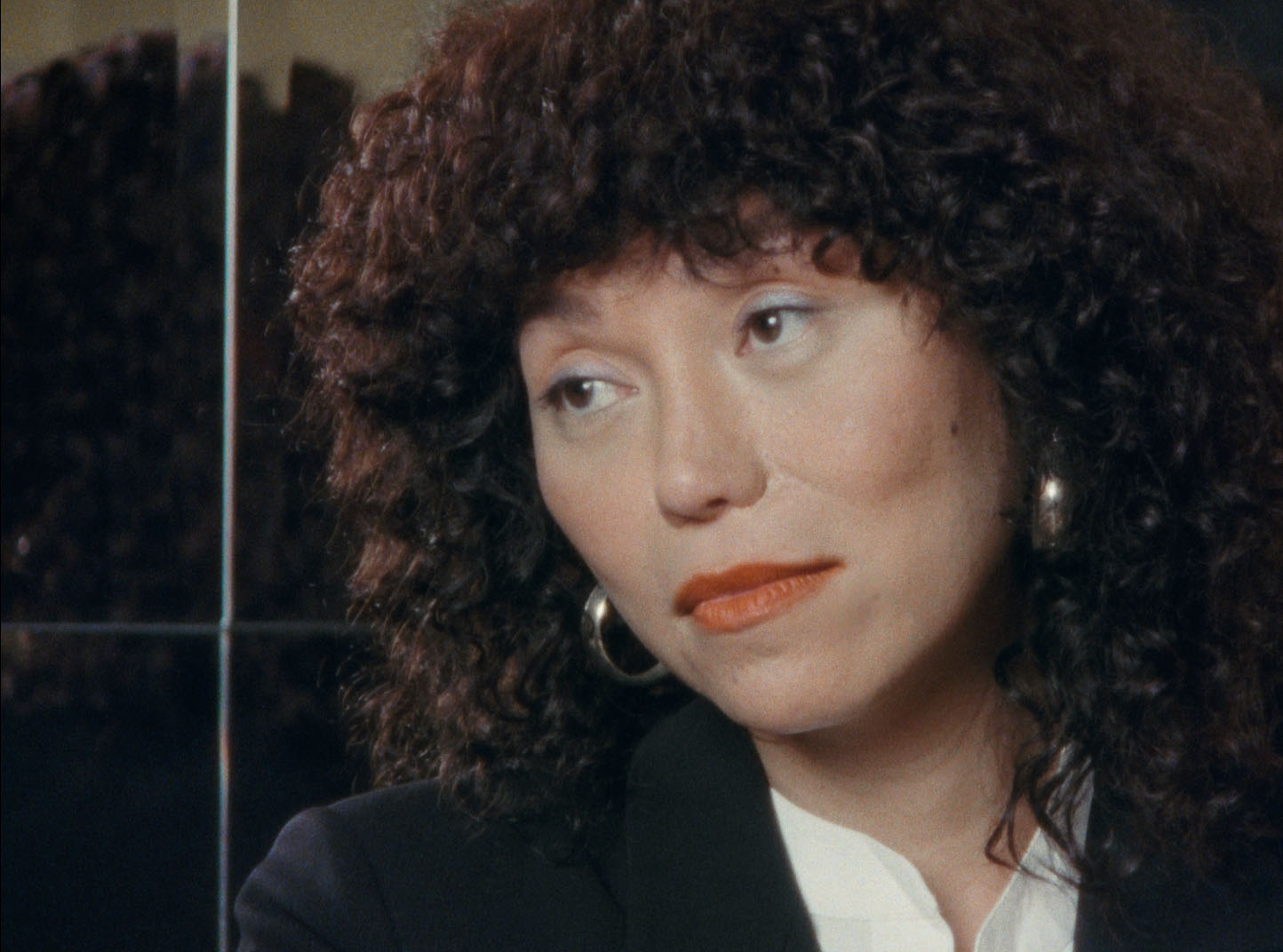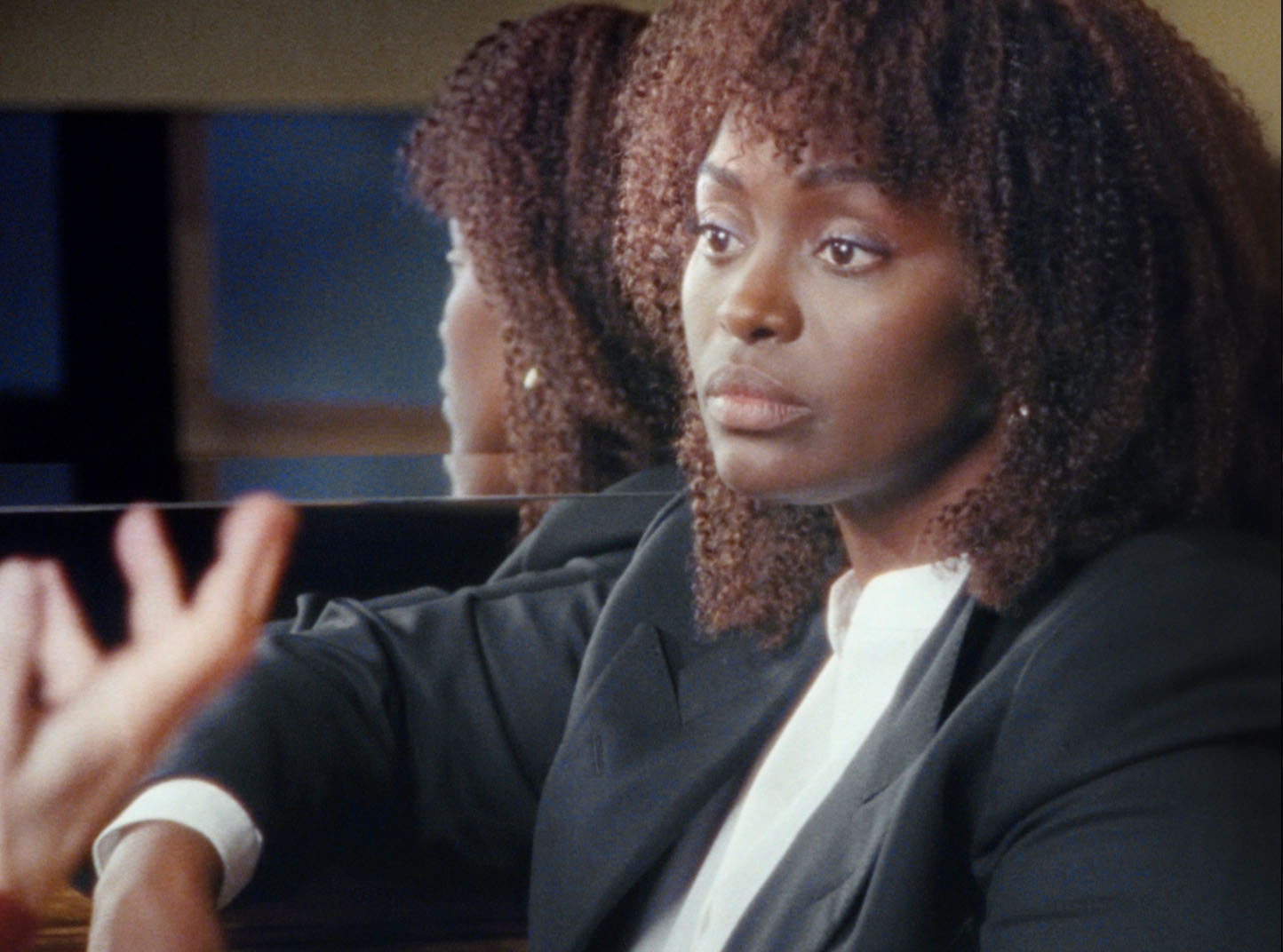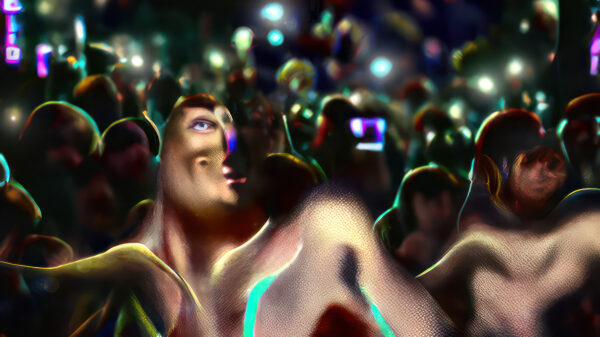Demystifying The Male Visual Appetite
Maria Schneider, 1983
The 1983 French television interview with actor Maria Schneider has lost little of its relevance in the intervening 40 years. In these reenactments of the interview, everything appears to be the same—but is it?

Elisabeth Subrin’s Maria Schneider, 1983 reconstructs a historical interview with the famous titular French actress. Three actresses, one after another, interpret the same script—Schneider’s original words—on the leathery bench of a well-attended cafe. In complementary terms, they talk about her career and professional dreams as a child and criticise the lack of depth in female characters, their codependency with the male lead, and exploitative conditions on film sets. The latter stems from the famed actress’s personal experiences, which she elaborates further. However, as the third version of the same old monologue spills across the flickering screen and yet another voice of (another) Maria is ringing through the movie theatre, the audience members begin to clear their throats. The legs get restless, fingers tightly intertwined; the chairs feel comfortable, the usual amount.
After realising you’re almost able to mouth the repetitively asked questions yourself, your gaze begins to wander. How does the second performer move her hand? Does she forget to light her cigarette, like her predecessor? Do I see a trace of insecurity in the eyes of the third actress? Even a lack of authenticity? One wonders, thoroughly convinced, this remains within the power of the anonymous spectator: Who plays the best? Who convinced me?
Whether the crowd just attended a casting or witnessed a cinematic experience remains unclear. Nonetheless, what initially felt like a predictable sequence of the same old question-and-answer game slowly becomes suitable material for an eager viewer’s detective habits. All three women possess an individual approach to the original interview. Through their different profiles, they use varying details to place new puzzle pieces, forming a “bigger picture” of unheard female voices within the film industry at the time, opening the original interview of Maria Schneider up to new dimensions.
Through such nuances, this reenactment uncovers different forms of discrimination that feminine-presenting artists often experience. Subrin gives the three actresses—Manal Issa, Aïssa Maïga, and Isabel Sandoval—the freedom to bring their own experiences into play. Whether it is age, race, or sexual identity, all the performers can recite the same script and perform it as authentically as if they had conducted the interview themselves.
While watching Maria Schneider, 1983, the viewer tends to classify the women and to evaluate their artistic abilities. The interview exposes precisely these power dynamics, which are found in the entire film history and film industry. While a prosaic voice asks the same questions repeatedly, the responses differ a lot, touching upon topics such as the mythification of actors, the dangers of an acting career for a young woman, and Maria’s dreams and aspirations. The dialogue comes to a head and finally confronts the actress with structural sexism in patriarchal structures of film production, and more specifically, how Maria herself dealt with sexual harassment in the workplace. With every interpretation, new questions are added to the pot, such as the dominance of white people in the film business and how women are often being reduced to their sex.
Just like actresses are often made hierarchically subordinate to the taste of a (male) director, the success of a given cinematic project crucially depends on its production and distribution. In the film world, those roles remain within a male domain, which evaluates female actors based on their potential capitalistic value. Within Maria Schneider, 1983, the many Marias quote the following line: “It’s not the director who chooses. And he wants to get his film made, so he’ll go with someone else.” Should the actress exceed a certain age, argue too brashly, or have a different skin colour than the white majority, she is often—quite simply—replaced to make way for someone more likely to satisfy the masses. “Too inexperienced”, “Too used up”, “Too controlled”: women are often placed in similar categories, in and out of film. Embedded in this structure, a viewer of Subrin’s film can not only find themselves in the same spot—we watch the film with the underlying desire to judge—but also reflect on it.
The so-called male gaze remains a rudimentary influence in cinema’s history. By presenting female characters through a masculine, heterosexual lens, or more precisely, in the case of the director, staging and visualising them, such an approach reduces women to merely sexual objects for visual pleasure. Subrin enhances this phenomenon with the help of an anonymous voice, asking its question off-screen. While this input directs the conversation, the audience doesn’t see the speaker, focusing on Marias and their faces instead. While they are responding to harshly asked questions, the point of listening to these responses recedes. Because of the thrice repeated enactments, the audience instead sees the women as pieces of art to be evaluated and looked at.

Maria Schneider, 1983
A societal consensus is formed through reproducing art defined by such a demanding gaze about how women should be viewed in public situations. Sigmund Freud’s notion of scopophilia (Schautrieb) can be applied in this context. Scopophilia (the desire to see) plays into the definition of the male gaze. Especially within traditional Hollywood films, female characters often had no particular autonomy in a plot produced by and for a heteronormative gaze but were rather tools for visual gratification. The voyeur marvels at them, dismembers them with his eyes, and reassembles them with his desires. From the perspective of the male audience, a woman’s femininity depends on the clothes she wears, her skin colour, and the number of shots her body features in.
Within Maria Schneider, 1983, the actresses are asked if Maria could not simply “abstract a film’s potential from her own experience”. As the film is separated into three interviews, the first two actresses remain silent on this question: “I don’t want to talk about Tango.” Only Isabel Sandoval’s interview breaks the silence about what Schneider actually lived through, and this only in the beginning of her acting career. During the production of the film Last Tango in Paris, directed by Bernardo Bertolucci, she was abused in front of the camera. Without prior discussions with the director or producers, she performed a rape scene. Her tears were real, she said, moved by the sheer feeling of humiliation in front of the camera. This explicit event is considered only the tip of the iceberg. Since #metoo, many cases of sexual assault and discrimination in professional contexts have been exposed. Maria Schneider was one of the brave pioneers of her time. Despite her statement and the verdict that the film was withdrawn from the market, it still circulates in public today: an ongoing traumatic experience that Maria, who was 19 at the time of shooting Last Tango, has never been able to shed.
Subrin has the off-screen female voice ask the same questions repeatedly, including whether the transcendent “Maria” would be comfortable on set. In the last scene at the cafe, Maria (and Isabel, respectively) leaves the room instead of responding to the final question. Later in her career, Schneider earned herself a reputation for often leaving the set in the middle of a production. Although the actress strongly supported the narratives surrounding her persona, becoming a women‘s rights advocate for equality and fair representation of female actresses within film, the ill fame of Last Tango accompanied her all her life. She suffered from depression, attempted several suicides, and struggled with drug addiction. Many women pay enormous prices to draw public attention to their discrimination, adding to their strained mental health; they often face the consequences within their careers.
Knowing this, the abrupt still of Maria leaving the scene at the end of Subrin’s short film gives us little time to detach ourselves from the moving image. Suddenly, we viewers are left with no one but ourselves, our thoughts, and the lack of visual stimulation. Embarrassed, we sink into our chairs. Now, it is much more uncomfortable than before. Subrin turns the tables. The film, the three women and many more, look at us, observe us by halting the screen.
By taking power away from us and having us trapped behind our lens, Maria Schneider, 1983 leaves the aftertaste of a sobering reflection. The viewer is taken on a journey that one can and must engage in, with or without Schneider’s biography. Her case is a mouthpiece of several voices, an experience many share. And there we sit, in the cinema, completely paralysed by the realisation that we, ourselves, are cogs in that very same machine.
This text was developed during the European Workshop for Film Criticism #1—a tandem workshop set during Filmfest Dresden and Vienna Shorts—and edited by tutor Ricardo Brunn.
The European Workshop for Film Criticism is a collaboration of the European Network for Film Discourse (The END) and Talking Shorts, with the support of the Creative Europe MEDIA programme.








There are no comments yet, be the first!